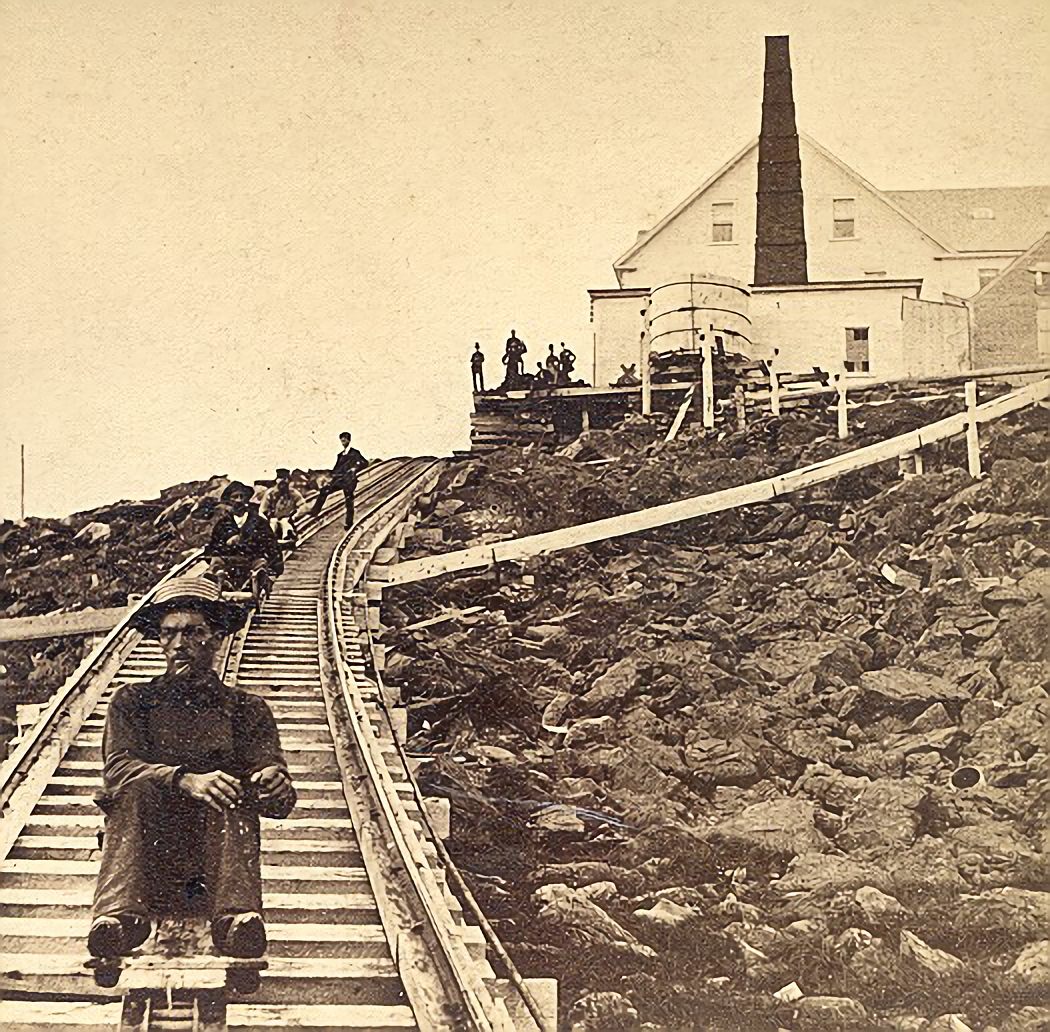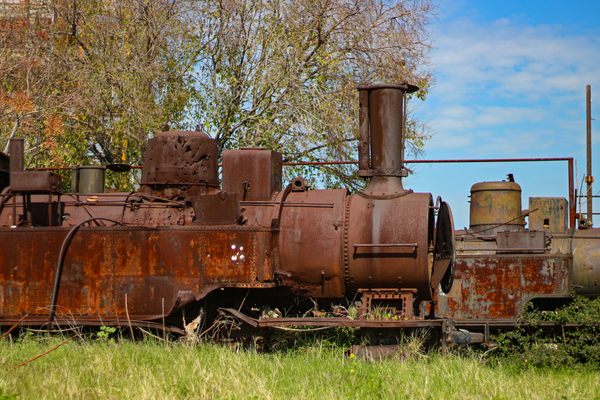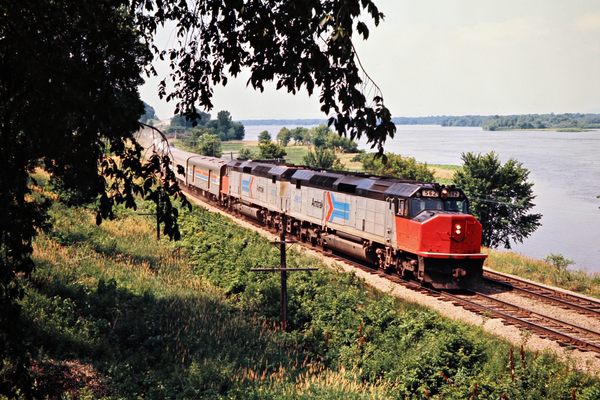New Hampshire’s Mountain-Climbing ‘Railway to the Moon’ Turns 150
The Mount Washington Cog Railway is still chugging.

In 1852, the entrepreneur and inventor Sylvester Marsh got lost in a storm and nearly died on the slopes of New Hampshire’s Mount Washington. The Northeast’s tallest peak is home to some of the worst weather on earth—in 1934, observers at the summit measured a wind speed of 231 miles per hour, one of the fastest gusts ever recorded not associated with a tornado or cyclone—and over the years it has claimed dozens of lives.
After wandering the slopes for what must have felt like an eternity, Marsh stumbled through the doors of a shelter near the summit. As he recovered from his ordeal and prepared to spend a night 6,288 feet above sea level, Marsh thought to himself that there had to be a better way to reach the summit. Marsh would end up spending the next 17 years solving that problem by building the world’s first mountain-climbing cog railway, which in 2019 is celebrating its sesquicentennial.

In the mid-19th century, when Marsh set out to design his new mountain-climbing contraption, railroads were still a new technology. The first railroad in the United States had only been built about 25 years earlier and generally only ran on flat ground. But if anyone could figure out how to run a train up a mountain, it was Marsh. The New Hampshire native had made his fortune in meatpacking in Chicago and held nearly a dozen patents. According to legend, Marsh even invented the first coffee percolator, although for some unknown reason he never filed a patent for that.
Marsh decided to build a railroad that used a cog-and-rack system, not unlike a bicycle chain on a sprocket, to help propel a train up hill. By 1858, he was confident enough in his design to approach the New Hampshire legislature for a charter to build a railroad up the west slope of Mount Washington. But politicians were less than impressed with his proposal and nearly laughed him out of the State House. One legislator suggested Marsh build a “railway to the moon” while he was at it. But despite their snide remarks, the state legislators granted Marsh a charter anyway.
The Civil War delayed Marsh’s plans, but by 1866, track was being constructed at the base of the mountain. To aid in the construction of the railroad, Marsh had a steam locomotive built and named it Hero. Unlike most locomotives of the era, Hero’s boiler stood vertically and some said it looked like a bottle of hot sauce. Soon the locomotive was given the nickname “Old Peppersass” and most people soon forgot its real name.

Three years later, the railroad—by then dubbed the Mount Washington Cog Railway—was completed to the summit. The railway was approximately three miles long and featured a maximum grade of 37.4 percent. Others quickly took notice of Marsh’s cog railway and, within a few years, they began to pop up elsewhere, particularly in Switzerland. One of the first passengers to the summit of Mount Washington was U.S. President Ulysses S. Grant. The showman P.T. Barnum was another early passenger who declared that the railroad was the “second greatest show on earth,” after his grand circus, of course.
Although the ride to the summit was spectacular, it was also slow, with a top speed of just under three miles per hour. Unlike most trains, where a locomotive pulls cars, cog railway locomotives push cars up the hill. When the train itself was not fast enough for them to complete their daily tasks, track workers used something called the “Devil’s Shingle” to quickly travel down the mountain. The toboggan-like contraption clipped into the cog rack in the middle of the track and could reach speeds of up to 60 miles per hour. According to legend, at least one man made the three-mile trip down the mountain in just two minutes and 45 seconds.

Marsh stayed with the railroad until his death in 1884. It was about the same time that Old Peppersass was retired and replaced with more modern steam locomotives. Old Peppersass sat at the base of the mountain until it was sent to Chicago, Illinois, for display at the 1893 World’s Fair and later the 1904 World’s Fair in St. Louis, Missouri. Afterwards, the historic locomotive ended up in a warehouse in Baltimore, Maryland, nearly forgotten for 30 years.
Old Peppersass turned up again in 1929 when the cog railway’s new owners brought it home to New Hampshire to mark the 60th anniversary of the operation. To celebrate the occasion, they decided to fire up the locomotive for one more trip up the mountain. Unfortunately, the trip ended in disaster when the cog wheel broke and the locomotive went careening down the mountain, derailing on the steepest part of the grade. While the locomotive’s crew jumped from the moving train, a photographer recording the historic run did not and he was killed.

Today, the ride up Mount Washington is much safer and smoother, according to Wayne Presby, the current owner and president of the railway. In recent years, the railroad has taken steps to modernize its operation, including replacing most of its steam locomotives with more efficient diesels. In years past, steam locomotives would use one ton of coal and nearly 1,000 gallons of water during a trip up the mountain whereas a diesel can do it with as little as 15 gallons of fuel. The diesel can also make the trip much faster, with a top speed of 4.7 miles per hour. However, the railroad still uses the steam locomotives for those who want to experience the trip as it was more than a century ago.
“People really love the steam locomotives,” Presby says. “Those trips sell out every time.”
Despite some modernization efforts, one thing that hasn’t changed is the weather. “Winter leaves late and comes early to Mount Washington,” Presby says, adding that harsh conditions are the biggest challenge to operating the railroad—a constant reminder of why Marsh decided to build it 150 years ago.













Follow us on Twitter to get the latest on the world's hidden wonders.
Like us on Facebook to get the latest on the world's hidden wonders.
Follow us on Twitter Like us on Facebook